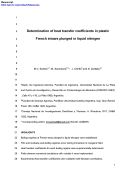Por favor, use este identificador para citar o enlazar este ítem:
https://repositorio.uca.edu.ar/handle/123456789/5457| Campo DC | Valor | Lengua/Idioma |
|---|---|---|
| dc.contributor.author | Santos, María Victoria | es |
| dc.contributor.author | Sansiñena, Marina Julia | es |
| dc.contributor.author | Chirife, Jorge | es |
| dc.contributor.author | Zaritzky, Noemí | es |
| dc.contributor.other | Universidad Nacional de La Plata (Argentina). Facultad de Ingeniería. Departamento de Ingeniería Química | es |
| dc.contributor.other | Consejo Nacional de Investigaciones Científicas y Técnicas (Argentina) ; Universidad Nacional de la Plata. Centro de Investigación y Desarrollo en Criotecnología de Alimentos | es |
| dc.contributor.other | Universidad Católica Argentina (Buenos Aires). Facultad de Ciencias Agrarias | es |
| dc.date.accessioned | 2019-06-06T00:48:22Z | - |
| dc.date.available | 2019-06-06T00:48:22Z | - |
| dc.date.issued | 2014 | - |
| dc.identifier.citation | Santos, M.V.; M. Sansiñena; J. Chirife y N. Zaritzky. 2014. Determination of heat transfer coefficients in plastic French straws plunged in liquid nitrogen [en línea]. Preprint del artículo publicado en Cryobiology 69(3). Disponible en: https://repositorio.uca.edu.ar/handle/123456789/5457 | es |
| dc.identifier.uri | https://repositorio.uca.edu.ar/handle/123456789/5457 | - |
| dc.description.abstract | Abstract: The knowledge of the thermodynamic process during the cooling of reproductive biological systems is important to assess and optimize the cryopreservation procedures. The time temperature curve of a sample immersed in liquid nitrogen enables the calculation of cooling rates and helps to determine whether it is vitrified or undergoes phase change transition. When dealing with cryogenic liquids, the temperature difference between the solid and the sample is high enough to cause boiling of the liquid, and the sample can undergo different regimes such as film and/or nucleate pool boiling. In the present work, the surface heat transfer coefficients (h) for plastic French straws plunged in liquid nitrogen were determined using the measurement of time-temperature curves. When straws filled with ice were used the cooling curve showed an abrupt slope change which was attributed to the transition of film into nucleate pool boiling regime. The h value that fitted each stage of the cooling process was calculated using a numerical finite element program that solves the heat transfer partial differential equation under transient conditions. In the cooling process corresponding to film boiling regime, the h that best fitted experimental results was h=148.12 ± 5.4 W/m2 K and for nucleate-boiling h=1355 ± 51 W/m2 K. These values were further validated by predicting the time-temperature curve for French straws filled with a biological fluid system (bovine semen-extender) which undergoes freezing. Good agreement was obtained between the experimental and predicted temperature profiles, further confirming the accuracy of the h values previously determined for the ice-filled straw. These coefficients were corroborated using literature correlations. The determination of the boiling regimes that govern the cooling process when plunging straws in liquid nitrogen constitutes an important issue when trying to optimize cryopreservation procedures. Furthermore, this information can lead to improvements in the design of cooling devices in the cryobiology field | es |
| dc.format | application/pdf | es |
| dc.language.iso | eng | es |
| dc.rights | Acceso Abierto | es |
| dc.rights.uri | https://creativecommons.org/licenses/by-nc-sa/4.0/ | es |
| dc.source | Preprint del artículo publicado en Cryobiology Vol.69, Nº 3, 2014 | es |
| dc.subject | TRANSFERENCIA DE CALOR | es |
| dc.subject | NITROGENO LIQUIDO | es |
| dc.subject | CONGELACION | es |
| dc.subject | REFRIGERACION | es |
| dc.subject | METODO DE ELEMENTOS FINITOS | es |
| dc.subject | EBULLICION | es |
| dc.subject | CRIOPRESERVACION | es |
| dc.title | Determination of heat transfer coefficients in plastic French straws plunged in liquid nitrogen | es |
| dc.type | Artículo | es |
| uca.path | Facultad de Ingeniería y Ciencias Agrarias|Artículos | es |
| uca.disciplina | PRODUCCION AGROPECUARIA | es |
| uca.filename | /home/data-uca-generic/folder_generic_common/Ing. y Cs.Agrarias/Art�culos/determination-heat-transfer-coefficients/metadata.xml | es |
| uca.issnrd | 1 | es |
| uca.affiliation | Fil: Santos, María Victoria. Universidad Nacional de La Plata. Facultad de Ingeniería. Departamento de Ingeniería Química; Argentina | es |
| uca.affiliation | Fil: Santos, María Victoria. Consejo Nacional de Investigaciones Científicas y Técnicas; Argentina | es |
| uca.affiliation | Fil: Sansiñena, Marina Julia. Pontificia Universidad Católica Argentina. Facultad de Ciencias Agrarias; Argentina | es |
| uca.affiliation | Fil: Sansiñena, Marina Julia. Consejo Nacional de Investigaciones Científicas y Técnicas; Argentina | es |
| uca.affiliation | Fil: Chirife, Jorge. Pontificia Universidad Católica Argentina. Facultad de Ciencias Agrarias; Argentina | es |
| uca.affiliation | Fil: Zaritzky, Noemí. Consejo Nacional de Investigaciones Científicas y Técnicas; Argentina | es |
| uca.affiliation | Fil: Zaritzky, Noemí. Universidad Nacional de La Plata. Facultad de Ingeniería. Departamento de Ingeniería Química; Argentina | es |
| uca.version | publishedVersion | es |
| item.grantfulltext | open | - |
| item.fulltext | With Fulltext | - |
| item.languageiso639-1 | en | - |
| crisitem.author.dept | Facultad de Ingeniería y Ciencias Agrarias | - |
| crisitem.author.dept | Facultad de Ingeniería y Ciencias Agrarias | - |
| crisitem.author.dept | Laboratorio de Ingeniería en Alimentos | - |
| crisitem.author.parentorg | Pontificia Universidad Católica Argentina | - |
| crisitem.author.parentorg | Pontificia Universidad Católica Argentina | - |
| crisitem.author.parentorg | Facultad de Ingeniería y Ciencias Agrarias | - |
| Aparece en las colecciones: | Artículos | |
Ficheros en este ítem:
| Fichero | Descripción | Tamaño | Formato | |
|---|---|---|---|---|
| determination-heat-transfer-coefficients.pdf | 653,67 kB | Adobe PDF |  Visualizar/Abrir |
Visualizaciones de página(s)
183
comprobado en 30-abr-2024
Descarga(s)
253
comprobado en 30-abr-2024
Google ScholarTM
Ver en Google Scholar
Este ítem está sujeto a una Licencia Creative Commons

